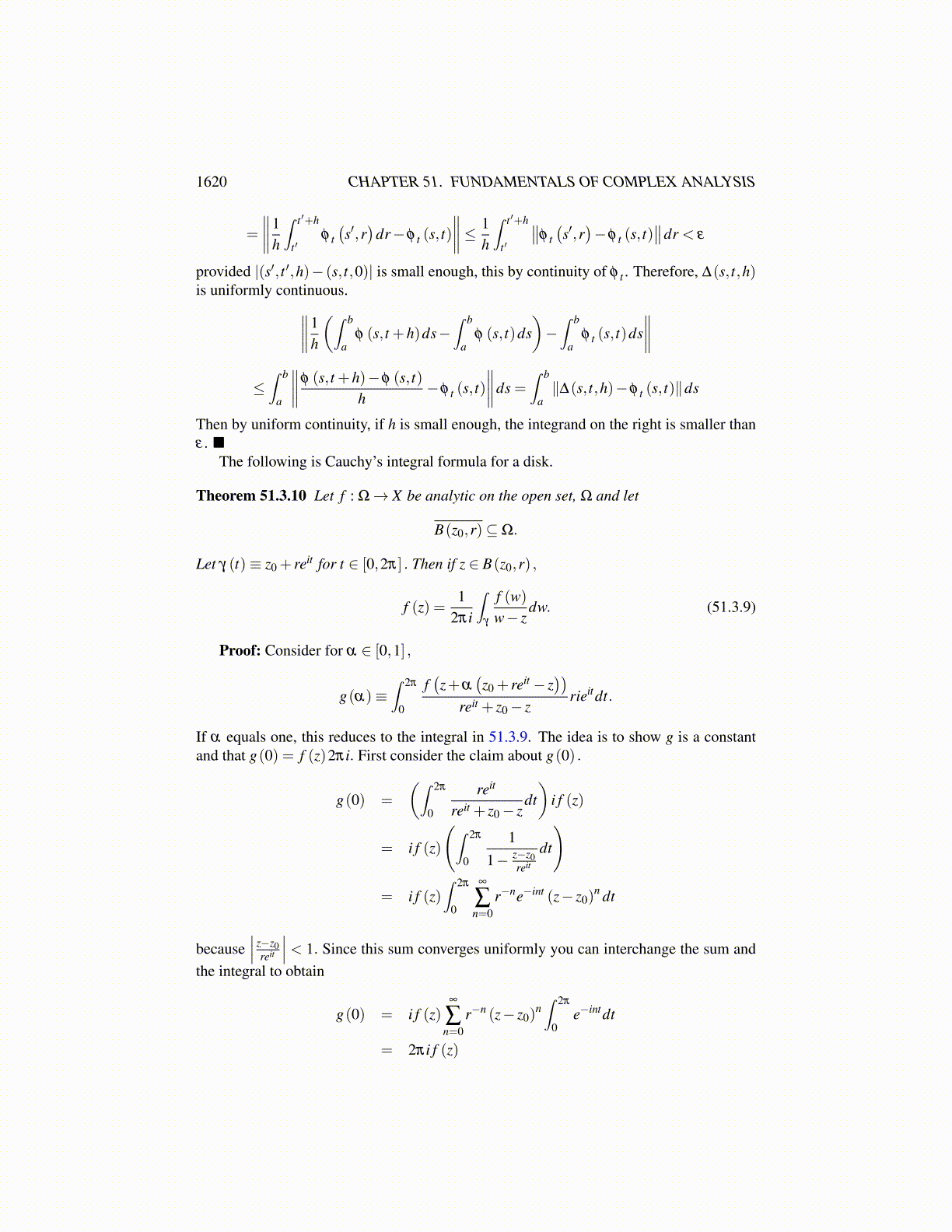
1620 CHAPTER 51. FUNDAMENTALS OF COMPLEX ANALYSIS
Proof: Let Λ ∈ X ′. Then Λg : [a,b]→ C . Therefore, from Lemma 51.3.2, for eachΛ ∈ X ′,Λg(s) = Λg(t) and since X ′ separates the points, it follows g(s) = g(t) so g isconstant.
Lemma 51.3.5 Let φ : [a,b]× [c,d]→ R be continuous and let
g(t)≡∫ b
aφ (s, t)ds. (51.3.1)
Then g is continuous. If ∂φ
∂ t exists and is continuous on [a,b]× [c,d] , then
g′ (t) =∫ b
a
∂φ (s, t)∂ t
ds. (51.3.2)
Proof: The first claim follows from the uniform continuity of φ on [a,b]× [c,d] , whichuniform continuity results from the set being compact. To establish 51.3.2, let t and t + hbe contained in [c,d] and form, using the mean value theorem,
g(t +h)−g(t)h
=1h
∫ b
a[φ (s, t +h)−φ (s, t)]ds
=1h
∫ b
a
∂φ (s, t +θh)∂ t
hds
=∫ b
a
∂φ (s, t +θh)∂ t
ds,
where θ may depend on s but is some number between 0 and 1. Then by the uniformcontinuity of ∂φ
∂ t , it follows that 51.3.2 holds.
Corollary 51.3.6 Let φ : [a,b]× [c,d]→ C be continuous and let
g(t)≡∫ b
aφ (s, t)ds. (51.3.3)
Then g is continuous. If ∂φ
∂ t exists and is continuous on [a,b]× [c,d] , then
g′ (t) =∫ b
a
∂φ (s, t)∂ t
ds. (51.3.4)
Proof: Apply Lemma 51.3.5 to the real and imaginary parts of φ .Applying the above corollary to the components, you can also have the same result for
φ having values in Cn.
Corollary 51.3.7 Let φ : [a,b]× [c,d]→ Cn be continuous and let
g(t)≡∫ b
aφ (s, t)ds. (51.3.5)
Then g is continuous. If ∂φ
∂ t exists and is continuous on [a,b]× [c,d] , then
g′ (t) =∫ b
a
∂φ (s, t)∂ t
ds. (51.3.6)